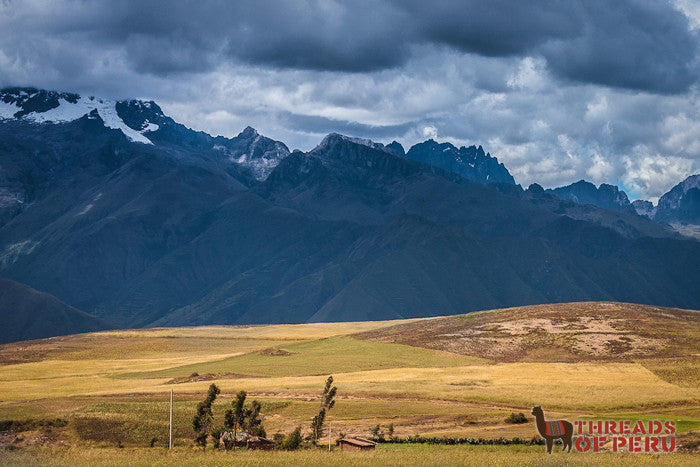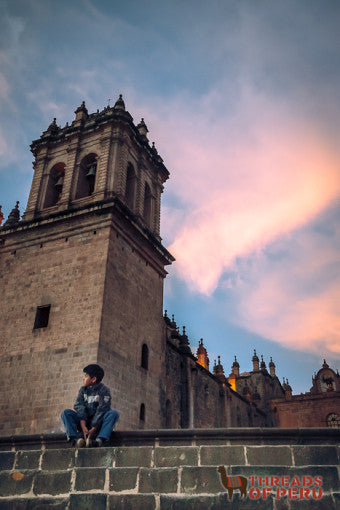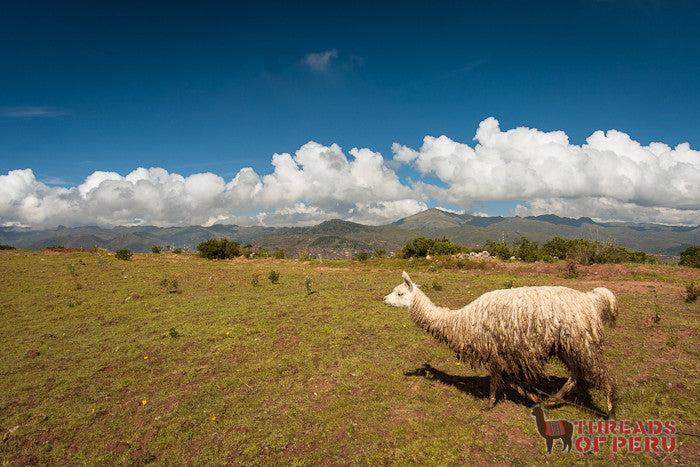
In recent blog posts, I’ve focused on the mountains around Cusco and how they inspire Andean art with their ruggedness, beauty, and natural life. Last week I pushed even deeper into the mountains and into the Sacred Valley on a guided trip with Thread’s partner, Apus Peru ($15 from each trek with Apus goes to support Thread’s projects).
I’ve known for a long time that I wanted to write about my first visit to the Sacred Valley. The Valley itself is of great importance to archeology and anthropology alike, but it was the mountains around it that interested me the most. That’s because those mountains are the same mountains that house our weaving communities.
I’d heard so much about the Valley — about its breathtaking vistas and glaciated peaks — I wondered if it would live up to my expectations. As our van approached the Valley’s edge, I knew this wouldn’t be a problem.

The first views simultaneously reminded me of the Chamonix Valley in France and of California’s Eastern Sierras, but this valley was also unique. It was hemmed in on one side by rolling slopes covered in grain fields and on the other by sharp ascents to pinnacled heights. Settlements lay stretched along the narrow floor following the curve of the Urubamba River (Also know as Wilka Mayu which means "holy river" in Quechua).
On my first day in the Valley clouds hung low and hid the larger glaciers on the highest peaks, like waves crashing in slow-motion over a jetty. When night fell and the full moon illuminated the landscape, the clouds receded to the valley’s rim like an outgoing tide. The stars, so often obscured by the haze and lights of Cusco, broke through their black blanket and hovered above the snowy heights.

The Sacred Valley is no stranger to trains, buses, and cars, but at night the sounds of mechanization fade away. They are replaced by older sounds— sounds of running rivers, rustling leaves, and racing winds.
In the wet season, the Valley is kept green by a steady flood of water from the surrounding mountains. In places like Ollantaytambo, streams are diverted into town and speed through wide gutters on nearly every street. The plunging waters are driven by the irresistible force of gravity deep into the Valley. This force can either bring life or destruction. A naked scar down one hillside marks the place where an alpine lake burst its natural dam and cut a path of destruction to the river below.

Sunrise on the second day was unobstructed by clouds. Clear light poured on Incan ruins and brought warmth to the valley floor. I realized I was closer than I had ever been to our communities, separated only by several miles of dusty road and a few thousand feet of vertical climbing.
Again I thought about the land and the inspiration it must hold for the people who live in it. The Sacred Valley and the mountains that watch over it are so vast, so difficult to grasp with a single glance, it’s amazing how well our weavers can capture it on cloth.











